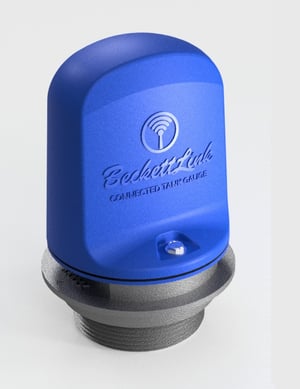While heating and combustion technology is always changing and developing, the newest system technologies are nearly all delving into the digital field. Over the past several years, several manufacturers have realized the true value of staying connected to their customers via the internet. Therefore, the WiFi connected tank gauge has emerged in the heating market to the benefit of both the manufacturers and their customers. In this post, we'll give you an introduction to connected tank gauges for heating and combustion and explain the benefits of WiFi communication between the the system, the customer, and the manufacturer.
Connected Tank Gauge System Components
While the connected tank gauge is in itself a revolutionary piece of heating tank technology, it cannot function on its own without a system of internet-connected components that communicate tank information with each other. While each manufacturer's connected tank gauge system may be a little different, most connected tank gauge systems contain these main components:
- The connected tank gauge: the connected tank gauge connects to the fuel tank and produces accurate tank readings. The gauge then uses a WiFi connection to send these readings to the WiFi hub.
- WiFi hub gateway: the hub gateway receives tank readings, such as usage information and fuel level, from the connected tank gauge and sends that information to the digital cloud.
- Digital interface(s): the manufacturer's digital interfaces are the platforms that allow fuel company employees and/or their customers to access the tank information that the hub gateway sends to the cloud. These interfaces can take different forms, but they will all display tank readings in a clear, readable way. These platforms can include browser applications, websites, mobile apps, and more.
When these components work together, they create an interconnected network of digital communication.
Benefits of the Connected Tank Gauge
 The connected tank gauge system, at its core, is a solution for collecting accurate fuel level information and then distributing that information for monitoring purposes. In one sense, simply being aware of tank levels and usage can help both customers and fuel companies feel more knowledgeable and in control of their heating fuel. However, the connected tank gauge also provides a variety of productivity and safety benefits as well.
The connected tank gauge system, at its core, is a solution for collecting accurate fuel level information and then distributing that information for monitoring purposes. In one sense, simply being aware of tank levels and usage can help both customers and fuel companies feel more knowledgeable and in control of their heating fuel. However, the connected tank gauge also provides a variety of productivity and safety benefits as well.
For the fuel company, the connected tank gauge and its system is an effective way to prevent fuel run-outs. By monitoring the accurate fuel level readings on-demand, the fuel technicians can help ensure that a customer has enough fuel until their next delivery. At the same time, tracking usage and identifying usage patterns can help fuel companies schedule and streamline fuel delivery routes and dates. Maximum delivery efficiency not only increases customer satisfaction, but it can also cut down on last-minute deliveries and longer delivery routes which impact the fuel company's bottom line. Finally, reading usage information from any device can help fuel technicians in the field or in the office diagnose issues with equipment performance, fuel delivery or storage.
On the customer's side, the connected tank gauge acts as a window into their own fuel usage and its effects on their home and finances. Other than the peace of mind the tank gauge provides, the consistent fuel supervision can help homeowners avoid fuel run-outs and other fuel-related safety issues. It's less likely that a home will go without heat, especially in dangerous temperature conditions, when a connected tank gauge can provide fuel level readings on demand. On the other hand, customers can actually reduce their fuel costs by simply using the readings to remain aware of how much fuel they're using. Reading patterns can allow customers to cut back on fuel usage and gauge how much fuel they actually need, potentially spacing out the timing of fuel deliveries.
Overall, the WiFi connected tank gauge provides more transparency into the heating system, which allows both the fuel company and the customer to be consistently aware of the quantity of fuel in the tank. Knowing how the system is performing and clearly understanding how much fuel is in the tank allows the customer and the oil company an opportunity to maintain uninterrupted comfort and security while balancing deliveries to meet the actual need.


